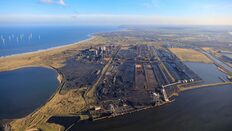- The project targets 1GW hydrogen production by 2030, capturing 2M tonnes CO₂ annually.
- Production could start by 2027 with a final investment decision in early 2024.
- bp has agreements with Venator and Northern Gas Networks for hydrogen supply and gas network decarbonization.
- The project integrates with Net Zero Teesside and Northern Endurance Partnership for carbon capture and storage.

Project Overview
bp is planning the UK's largest blue hydrogen production facility, H2Teesside, targeting 1GW of hydrogen production by 2030. The project aims to capture and store up to two million tonnes of CO₂ annually, equivalent to the emissions from heating one million UK households.
Strategic Location
Teesside, in north-east England, is chosen for its proximity to North Sea storage sites, pipe corridors, and existing hydrogen infrastructure. The region accounts for over 5% of the UK's industrial emissions and houses five of the country's top 25 emitters.
Timeline and Development
The final investment decision is expected in early 2024, with production potentially starting by 2027. The project will initially produce 500MW of blue hydrogen, with plans to scale up to 1GW by 2030.
Partnerships and Agreements
bp has signed memorandums of understanding with Venator and Northern Gas Networks to supply clean hydrogen and decarbonize gas networks. Additionally, bp is collaborating with Tees Valley Combined Authority to explore green hydrogen opportunities.
Integration with Existing Projects
H2Teesside will integrate with the Net Zero Teesside and Northern Endurance Partnership carbon capture and storage projects, both led by bp. This integration aims to create one of the UK's first carbon-neutral industrial clusters.
Future Potential
The project supports the UK's Ten Point Plan for a green industrial revolution and aims to decarbonize hard-to-electrify industries. bp sees potential for further hydrogen demand in Teesside beyond 2030, contributing to the UK's net-zero goals by 2050.

